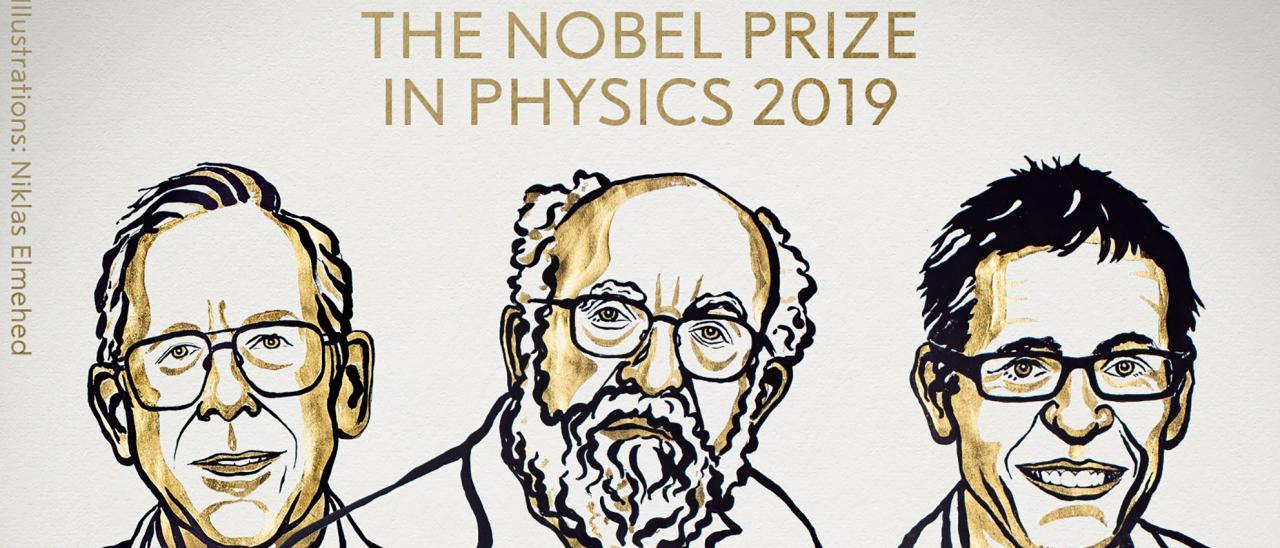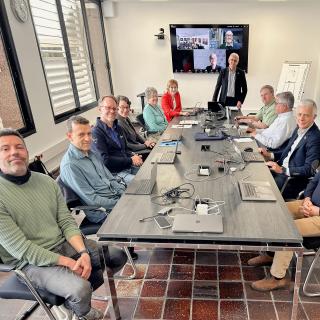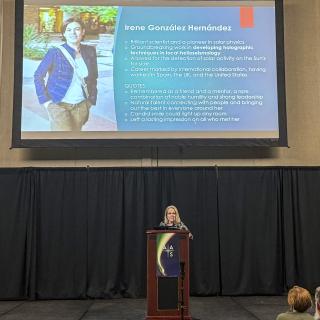The Isaac Newton Group of Telescopes (ING) and the Institute of Astrophysics of the Canary Islands (IAC) warmly congratulate James Peebles (Princeton University), Michel Mayor (University of Geneva) and Didier Queloz (Universities of Geneva and Cambridge) on the award of the Physics Nobel Prize 2019.
The Swedish Academy awarded the prize "for contributions to our understanding of the evolution of the universe and Earth's place in the cosmos". For Mayor and Queloz, the award recognises their discovery, published in 1995, of the first planet outside the solar system, orbiting a solar-type star. Peebles is recognised for his theoretical contributions to physical cosmology.
This Nobel Prize Award has special relevance for the ING, which in 2017 signed an agreement with Prof. Queloz for the installation of a powerful new spectrograph at the Isaac Newton Telescope (INT). Queloz and a European/North American consortium that includes the IAC, are building this instrument (HARPS-3), to carry out the Terra Hunting Experiment (THE). The THE survey, covering 10 years of observations, will study the stars closest to the Sun visible from the northern hemisphere, in order to identify and study twin planets of the Earth, orbiting in the habitable zone of stars like the Sun.
Marc Balcells, Director of the ING telescopes, stressed that "the discovery of the first extra-solar planet orbiting a solar-type star marked a milestone in modern astronomy, opening a field of research that has expanded enormously in recent years and which allows humanity to advance its search for life outside our planet. For the ING, collaboration with Queloz represents a tremendous opportunity to continue decades of contributions to astronomy, and shows that medium-size telescopes such as the INT can be competitive when they are equipped with cutting-edge instrumentation."
Jonay González Hernández, Ramón y Cajal researcher at IAC and Spanish Principal Investigator of HARPS-3, explains that "IAC is developing one of the HARPS-3 subsystems. This instrument will allow the velocities of stars be measured with accuracy better than 1 meter per second."
The IAC has also collaborated with Mayor in the construction of the ESPRESSO instrument for the Very Large Telescope of the European Southern Observatory (ESO), and with Queloz in the SPECULOOS Norte project of the Teide Observatory, Tenerife, for the observation of transits of terrestrial exoplanets in low-temperature stars and brown dwarfs. Mayor has also been a member of the Research Advisory Board of the IAC for several years.
The Nobel Prize in Physics 2019 is the sixth since 2000 that has been awarded for achievements in astrophysics, and the second in the field of observational optical astronomy (the first was in 2011 for the discovery of the accelerated expansion of the Universe).
More information:
"The Nobel Prize in Physics 2019", KVA press release, 8 October 2019.
"Nobel Prize in Physics awarded to Michel Mayor and Didier Queloz", UNIGE press release, 8 October 2019.
Talk by Didier Queloz, Institute of Astronomy, University of Cambridge, 9th October 2019.



